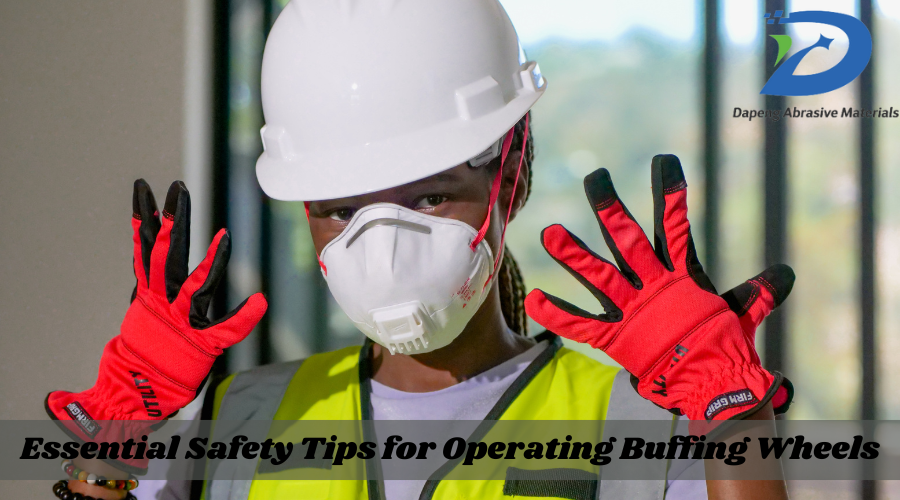



Buffing wheels are essential tools in various industries, especially for polishing and finishing surfaces to achieve that perfect shine. However, operating these machines comes with inherent risks, making safety paramount. Whether you're a seasoned professional or a hobbyist, understanding and adhering to safety guidelines can prevent accidents and ensure a smooth operation. In this article, we'll explore the essential safety tips for operating buffing wheels, focusing on protecting both the user and the equipment.
Before diving into safety tips, it’s crucial to understand what buffing wheels are and how they operate. Buffing wheels are rotating tools made of cloth, felt, or other soft materials, used to polish and shine surfaces. They work by rubbing a compound against a workpiece to remove imperfections and create a smooth, shiny finish. Knowing how these wheels function can help you better appreciate the importance of following safety protocols.
Wearing appropriate personal protective equipment (PPE) is the first line of defense against potential hazards. Safety goggles are essential to protect your eyes from flying debris or compound particles. Gloves should be worn to safeguard your hands from sharp edges and the heat generated by friction. Additionally, hearing protection is advised if you’re working in an environment where noise levels exceed safe limits.
Ensuring that your buffing wheel is properly set up is vital for safe operation. First, make sure that the wheel is securely mounted on the spindle and that there are no signs of wear or damage. The machine should be placed on a stable surface, and all moving parts should be checked for any signs of malfunction. A loose or damaged buffing wheel can lead to catastrophic failure, posing a serious risk to the operator.
Each buffing wheel is designed to operate at a specific speed, and exceeding this speed can lead to dangerous situations. Always check the manufacturer's recommended speed settings for your buffing wheel and ensure that your machine is set accordingly. Running a buffing wheel at too high a speed can cause the wheel to break apart, leading to injuries.
Operating a buffing wheel requires your full attention. Distractions can lead to mistakes, which, in turn, can cause accidents. Ensure that your workspace is free from unnecessary interruptions, and always stay focused on the task at hand. If you need to take a break, turn off the machine and wait for the wheel to come to a complete stop before stepping away.
A cluttered workspace can lead to accidents. Keep your work area clean and free of any unnecessary tools or materials that could get caught in the buffing wheel. Ensure that there is adequate space around the machine for you to move freely, and that the floor is clear of debris to prevent tripping hazards.
Buffing compounds are essential for the polishing process, but they must be handled with care. Avoid applying too much compound to the wheel, as this can lead to buildup and uneven buffing. Instead, apply small amounts as needed and reapply frequently to maintain a consistent finish. Also, be mindful of the type of compound you're using and ensure that it is compatible with the material you're working on.
Routine inspection and maintenance of your buffing wheel and related equipment are crucial for safe operation. Check the wheel for any signs of wear, tear, or damage before each use. Replace the wheel if you notice any cracks, fraying, or other signs of deterioration. Additionally, keep the machine's motor, spindle, and other components in good working condition by following the manufacturer's recommended maintenance schedule.
Your stance and positioning are critical when operating a buffing wheel. Always stand directly in front of the wheel, with your feet shoulder-width apart for stability. Keep a firm grip on the workpiece, and avoid applying too much pressure, as this can cause the piece to catch on the wheel and be thrown. Use smooth, controlled movements to guide the workpiece across the wheel's surface.
Finally, it’s important to know when to stop. If you notice any unusual sounds, vibrations, or signs of malfunction, turn off the machine immediately and inspect the equipment. Continuing to operate a buffing wheel that isn't functioning properly can lead to serious injuries. Additionally, if you feel fatigued or uncomfortable, take a break. Operating a buffing wheel when you're not at your best can increase the risk of accidents.
Operating buffing wheels requires more than just technical know-how; it demands a commitment to safety. By following these essential safety tips, you can protect yourself and others from potential hazards while achieving the desired results in your polishing and finishing tasks. Always remember that safety is an ongoing process—regularly review and update your safety practices to ensure they remain effective. Whether you’re working in a professional setting or pursuing a hobby, these guidelines will help you operate buffing wheels with confidence and peace of mind.
If you're serious about achieving a professional finish on metalwork, wood, or other materials, then a sisa...
READ FULLPolishing wheels are applied in numerous industries as the final step ...
READ FULLIn metal polishing applications, choosing the right buffing wheel is e...
READ FULL